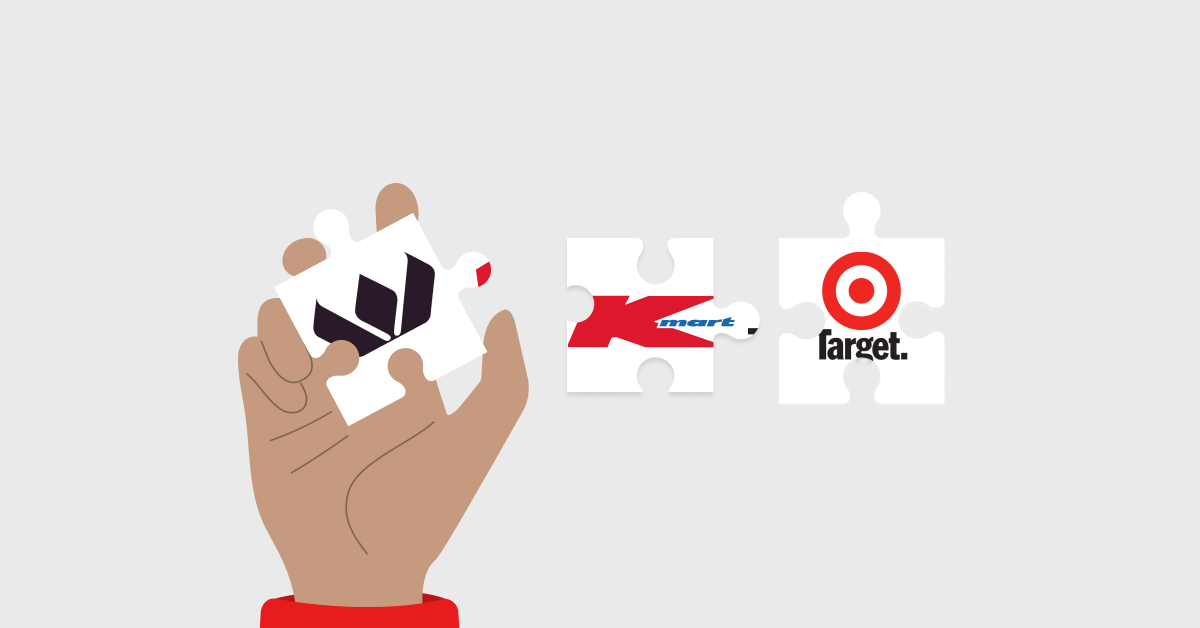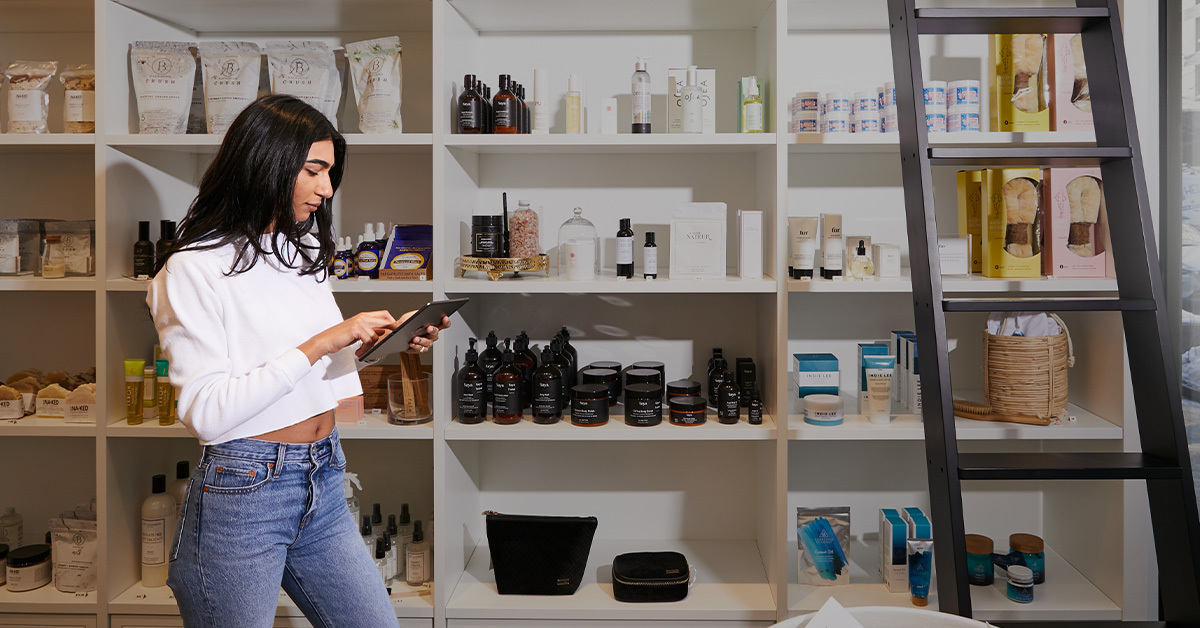
On 25th July 2023, it was announced that popular retail giants Kmart and Target will merge in a shock $10 billion shakeup.
Wesfarmers, the Australian conglomerate that owns both Kmart and Target, announced they would merge both businesses to streamline their office operations.
“The announcements are an internal reorganisation of our support offices, and there are no impacts to the Kmart or Target stores,” commented Kmart Group Managing Director Ian Bailey.
“While Kmart and Target have traditionally been run as two separate businesses, we’ve been operating the two closely together as part of the Kmart Group division of Wesfarmers for some time.”
Wesfarmers are keen to highlight that the merger will have little impact on staff and customers and will be “business as usual” for store networks across the country.
However, the joining of two retail heavy weights is seldom something to brush under the carpet. Unsurprisingly, many Aussie retailers wonder what long-term impacts the merger will have on customer shopping habits and independent retailers.
Start your free trial today
In this article, we take a closer look at the ins and outs of the merger and explore what this might signal for the future of retail in Australia.
- Understanding the merge
- Wesfarmers: a closer look
- What does this mean for independent retailers?
- Lower prices for customers
- Focus on technology
- Kmart and Target: what’s next?
The 10 Biggest Mistakes Retailers Make When Running Multiple Stores
Learn how to keep your teams aligned and stores running smoothly with this prescriptive guide for multi-outlet retailers. Fill in the form below to download your guide.
Understanding the merger
Wesfarmers has owned Kmart and Target since 2007 as separate businesses. However, the restructuring means they will now be run as one $10 billion business.
While the businesses are merging, the impact will be behind the scenes and have little effect on customer-facing operations. From a customer perspective, changes will be minimal as both Kmart and Target stores will retain their branding and in-store experience.
For Kmart Group managing director Ian Bailey, the merger is an opportunity to provide “the best value products to the thousands of customers”.
“This new operating model will unlock a new level of scale and productivity across both brands, so we can deliver even greater value to our customers in the future,” he said.
Wesfarmers: a closer look
While Wesfarmers may not be a household name, the conglomerate wields significant retail power in Australia and, aside from Kmart and Target, owns several well-known brands, including Officeworks, Bunnings Warehouse and Priceline Pharmacy.
On the surface, the merger of Kmart and Target may seem like a monopolising move, as they appeared to be in direct competition. However, the fact that they’ve had the same owner for well over a decade means the monopoly has been in play, albeit behind the scenes, for a while.
For Wesfarmers, combining the two businesses is an opportunity to streamline back-office operations and optimise costs to offer customers a better-value product range.
What does this mean for independent retailers?
The Kmart and Target merger will have come as a shock to retailers, and many will be wondering what impact, if any, the union will have on their business.
It looks like both brands will be operating as usual for the immediate future, and the impact on the broader retail industry will be minimal.
The longer-term might look a little different, though.
While leaders at Wesfarmers, Target and Kmart note there will be minimal impact on customer-facing operations, we’ve identified two key areas of the merger that might have a knock-on effect on independent retailers: lower prices and an increased focus on technology.

Lower prices for customers
“The biggest change customers should expect is lower prices over the next 12 to 24 months.”
Combining Kmart and Target into one business will inevitably lead to lower-priced products in both stores.
By streamlining their back-office operations, Wesfarmers can cut unnecessary costs and ensure duplicate products are removed across stores, which will eventually lead to a more affordable product offering.
Leading retail expert Dr Gary Mortimer, from Queensland University of Technology, agrees with this sentiment and believes the merger will make products more affordable – an obvious win for consumers.
“Customers won’t notice; the brands will still be operated as two separate brands,” Dr Mortimer told news.com.au. “You’ll still have your favourite Kmart store, the Target store will remain mostly the same.”
“The biggest change customers should expect is lower prices over the next 12 to 24 months.”
Barcode generator
Create unlimited barcodes for your products for free.
Impact on retailers
Kmart and Target are well known for their affordable product range, often making it challenging for independent retailers to compete with these brands.
While competing with big brands has always been difficult for independents, the merger between Kmart and Target will likely increase this pressure. In time, the newly unified Kmart and Target business will be able to offer even lower prices – making it more appealing for customers to shop in their stores.
With increasing operating costs and tight margins, it’s not always possible for independent retailers to compete on price. However, it is possible to compete on experience – which is often where independent retailers excel.
A recent survey found that 86% of shoppers are willing to pay more for a great customer experience. Research also found that 49% of shoppers have made impulse purchases after receiving a more personalised experience.
This is promising news for retailers who are worried about trying to compete with Target and Kmart on price. It’s clear that customers are willing to pay more for their products as long as they receive a great customer experience – something that independent retailers are experts at offering.
Focus on technology
According to Kmart Group Managing Director Ian Bailey, one of the reasons for merging Kmart and Target was to optimise the technology in both stores.
“Running two businesses, it was very, very difficult to get the tech into Target and to get those benefits. This is really why we decided to push the two businesses into one.”
“This change enables us to push the same technology into Target because we will get to a point when we will have one technology stack,” Mr Bailey told AFR. “We will run one set of processes… So you can see how all of this plays into our productivity improvement.”
Impact on retailers
It will come as no surprise to retailers that Kmart and Target want to focus on improving their technology to better run their business.
We live in a digital world, and the majority of customers are now extremely tech-savvy – making omnichannel retail increasingly important.
For national retailers like Kmart and Target, rolling out complex technology changes is imperative – but an initiative like this takes time when it needs to be implemented across 300+ stores.
This is where independent retailers can stay ahead of the curve, thanks to their agility, by quickly adopting technology to help optimise and streamline their business.
Whether retailers want to take their business online and offer an omnichannel shopping experience or optimise their in-store experience through innovativeinventory tools and customer loyalty programs, it’s all possible through easy-to-use retail tech like Lightspeed.
A recent 2023 survey found that 90% of shoppers believe that technology will significantly improve the overall shopping experience. This is an excellent indicator of customer sentiment, and retailers are in a perfect position to implement technology in their stores to keep abreast of changing customer demands.
White Paper: Retail Insights & Shopper Sentiment for 2024
Comprehensive report, a survey of 750+ Australian adults, that reveals customers’ shopping preferences and habits, and shares actionable insights for retailers in 2024.
Kmart and Target: what’s next?
It’s no secret that Target has witnessed a steady decline in recent years, dropping from almost 300 stores to just over 120 in recent years.
In 2021, Wesfarmers announced that 75 Target stores would permanently close, while 44 Target stores were rebranded to Kmart or ‘KHub’.
On the other hand, Kmart has over 320 stores across Australia – making it a considerably larger brand than its counterpart. Unsurprisingly, this was reflected in Kmart’s recent growth figures – in the six months up to 31 December 2022, Kmart was up by 17.1% compared to Target’s 2.8% rise.
As a result, many in the industry speculate that the merger may be the first step towards eventually winding down the Target brand in Australia.
Leading retail expert Dr Gary Mortimer believes that ditching the Target brand altogether “was probably an option on the table.”
“The stronger brand will cannibalise the weaker brand,” he predicted.
While the merger may have been an unsettling announcement for many retail business owners, the short-term impact will likely be limited.
While product prices in Target and Kmart are set to fall in the coming years, independent retailers are perfectly positioned to mitigate the risk of competition. By further enhancing their customer experience and implementing technology to optimise their processes and in-store experience, retailers are set to appeal to a wide range of customers willing to spend more if they’re guaranteed an enhanced and more personalised experience.
Start your free trial today

News you care about. Tips you can use.
Everything your business needs to grow, delivered straight to your inbox.


